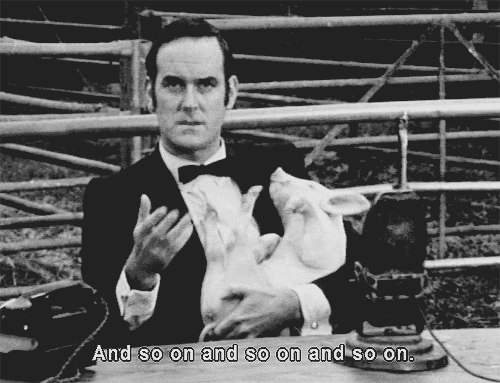It’s time to face the facts: the B2B buyer’s journey is anything but a solo act.
In fact, nearly half (43%) of B2B buyers said that the number of people involved in purchase decisions has grown. Because of this rising trend, B2B organizations must target many different stakeholders involved in the purchase. But, this becomes a complicated dance when separate teams within a single organization own different pieces of the process.
Every role within your organization—even roles within marketing—have their own tools, content types, and channels to manage. From sales to customer success to marketing, each function has a stake in the buying process. But lack of communication, or a clearly defined integrated strategy to execute upon, causes ad hoc content creation, off-brand messaging, and a disparate customer experience. To address the needs of every buyer in the purchasing process, B2B organizations need a closed-loop marketing strategy approach—meaning every team within the organization should be clued in, and have a stake in its success.
To get your internal teams on a “one-team, same-team mentality,” start by conducting an audit of your current B2B marketing strategy. This will help you assess current processes and establish company-wide goals. Here is your step-by-step guide:
1. Assess Your Internal Stakeholders
The first step to auditing your B2B marketing strategy is to assess each of your internal stakeholders, their roles, and the channels they manage. In order to serve a consistent story to all of the players involved in a B2B purchase, you and your teams need to be able to collaborate and work cross-functionally so each department within your organization is aligned around the same goals.
When assessing your internal stakeholders, start by listing out all of your internal teams. These teams could include the following: demand gen, digital, field marketing, marketing and sales operations, product marketing, and social/PR. Determine which channels each team currently manages, and the type of content they serve. Once you identify current roles and responsibilities, you can then identify gaps in the process, and address any areas where communication between teams is lacking and how to improve it.
2. Define and Map Content to Your Buyer’s Journey
B2B organizations often struggle to be in agreement across the company about the various stages in the buyer’s journey. When sales teams define the stages differently from marketing teams, the result is miscommunication, convoluted tracking and reporting, and poor visibility into the health of your pipeline.
To get your internal teams on the same page, start by outlining each stage in a buyer’s journey, from awareness to purchase to repeat customer. Identify what buyer activity looks like at that every stage, how you’re defining each stage, and which team is responsible. It should look something like this:
Once you’ve outlined each stage of your buyer’s journey, determine what content is used by which team at each stage, the goals associated, and the metrics you need to track.
Once you’ve defined your buyer’s journey—including agreed upon sales and marketing definitions—you can create a closed-loop, marketing-sales funnel. This ensures that all of your internal teams are aligned on the specific pain-points you need to address as well as the content served at each stage.
3. Audit Your Personas
Addressing multiple players in a single sale is not easy. Each person you target has a unique perspective on their company’s challenges, and they have different pain-points and concerns related to the purchase. B2B marketers are responsible for creating content that addresses these specific and unique challenges, but when the pain-point marketing addresses doesn’t match sales’ approach, there’s a disconnect that becomes detrimental to the buying process.
To conduct an audit of your current personas, survey your internal stakeholders on how they define your personas and their associated pain-points. This will help you to quickly identify where teams are in alignment, and where there is confusion. The key here is to get perspective from all your internal teams and mine them for information and insight. Your sales, customer success, and marketing teams have different interactions with each of your personas at different buyer stages. By leveraging information across these teams, you can build out better, more well-rounded buyer-personas.
Just as B2B buyer’s don’t make purchases alone, B2B marketers don’t propel leads through the pipeline alone. Gather your stakeholders, audit your current marketing activities, and get ready to build a winning B2B marketing strategy.
By Erica Lindberg • Business2Community
By Erica Lindberg • Business2Community





